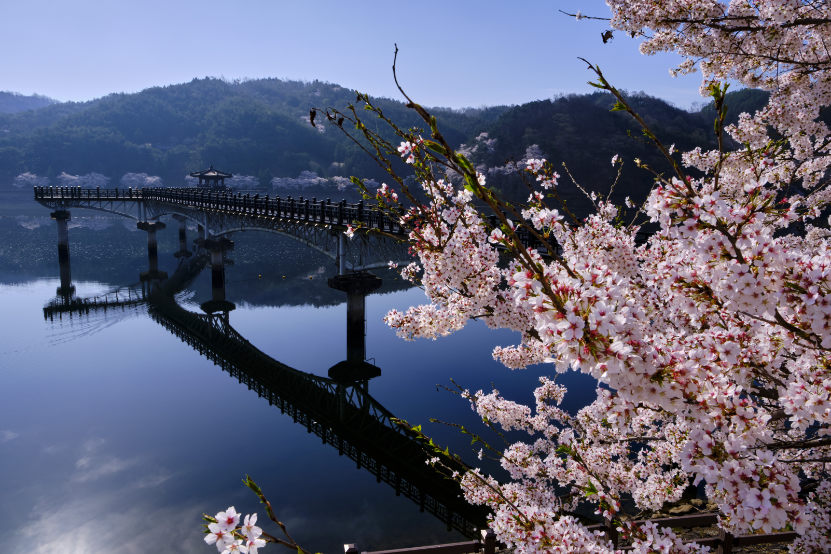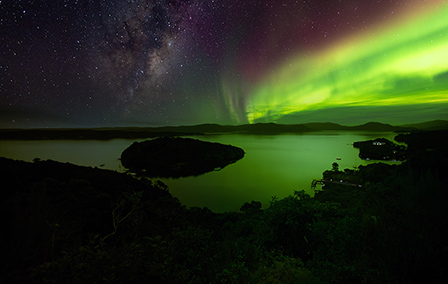Published 25th Jul. 2023
Reading time
There are few greater feelings than the sense of wonderment that comes with tipping your head back and gazing up at the night sky. And while we’re not about to start banging on about antimatter, circumstellar discs and magellanic clouds (although they all sound marvellous), we are in the know when it comes to the best places to see stars.
It's alarming, then, that some scientists predict that, due to the encroachment of light pollution, we may not be able to see the night sky and stars across large sections of the planet beyond 2025. The message is clear – appreciate them while you still can. With that in mind, we've channelled our inner Edward Hubble and scoped out (sorry) the best stargazing in the world...
Smack bang in the middle of a designated dark area in Western Australia's Cape Range National Park is Sal Salis Ningaloo Reef, where luxury wilderness tents blend seamlessly into the surrounding sand dunes. Watch stars dance across the night sky to a soundtrack of lapping waves from the comfort of your four-poster bed, or while lying on the beach below. With only nine tents in the camp, you'll feel truly tiny against the vast planetarium overhead.
At a staggering 11,500 ft high in North-Eastern India, you'll be forgiven for attempting to reach out and touch the night sky from the hills of Ladakh. The sheer inaccessibility of the place has enabled it to virtually escape all light pollution, creating a starry night so magnificent that even Van Gogh would be in awe of it. Watch twinkling stars cascade across a black canvas behind jagged snow-capped mountains from the sophisticated charm of the Shakti Ladakh Village Houses. And if you wish upon a lucky star, you might even spy an equally mesmerising snow leopard during your stay.

When there's laws against light pollution, you know you're in for a treat. As one of the driest places on earth, the Atacama Desert's wild sandy plains and rugged red canyons will leave you feeling like you've landed on Mars (fun fact: it's actually used to test Mars rovers in simulations). Chile's dedication to preserving darkness has cemented the Atacama's reputation as one of the best stargazing destinations, with the Milky Way so bright at the New Moon it can cast a shadow. Stay at the divine Explora Atacama and point out the planets from the hotel's own private observatory. And if you need to take your astronomy boffin-dom (technical term) a step further, the ALMA observatory is just a one-and-a-half-hour drive away.

Where the Atacama Desert is rusty red, Northern Norway is snow white. This region is one of the few places on earth where the Milky Way is overshadowed, by none other than the Northern Lights, making this a real contender in a round-up of the best stargazing in the world. Stay in the traditional wooden cabins of Lyngen Lodge and spend your days dog sledding, skiing and the like, before an evening of gawping at the iconic green rivers of the aurora borealis snaking across the sky.

Following a trip to Botswana's Makgadikgadi Pans, one of our travel experts stated: 'They're the most incredible stars I have ever seen. Sleeping out on the Pans and watching the stars...I hardly slept!' These arid pans are the remains of the world's largest super lake, making for a surreal setting to watch the starry night unfold. Spend days exploring the Pans' distinctive landscapes and learning about the tribes that survive here, and nights sleeping on bedrolls under skies illuminated with horizon-to-horizon stars.
Venture to the Namib Rand Nature Reserve, one of Africa’s largest private nature reserves, to experience one of the naturally darkest (yet still accessible) places on Earth. The reserve plays host to some of the best stargazing in the world for travellers who want to enjoy sweet solitude on desert hikes by day and epic celestial shows and sleepouts under an ocean of stars come nightfall.
Venture to the wilds of eastern Canada and gaze at the brightest stars in Nova Scotia. A night in Kejimkujik National Park offers the full stargazing package, from outdoor shows accompanied by music and stories to night-time hikes and even the occasional canoeing excursion. For the true astronomers-in-training, there are educational programmes that teach visitors how artificial light affects humans and wildlife, as well as the value of these Dark-Sky Preserves.
On New Zealand's South Island lies Lake Tekapo, a destination that is picturesque during the day and absolutely dazzling by night. Crystal-clear waters and craggy mountains make the perfect backdrop for a truly dramatic stargazing experience that is guaranteed to knock your binoculars off. Join a guided tour of the Dark Sky Reserve to learn all about the southern skies, as well as the fascinating mythology and legends attributed to celestial objects by different cultures around the world.

Written by Luisa Watts
Practical advice and inspiration for your next trip

When you think of cherry blossom, we’d bet you picture Japan and its springtime Sakura. Now, we’re not denying that Sakura season is beautiful, but its reputation means it draws flocks of visitors, contributing to overtourism and disrupting local life. To combat this, we’re on a mission to shout about South Korea’s cherry blossom. Known locally as beotkkot, South Korea’s cherry trees bloom at a similar time to Japan’s and are just as breathtaking – without the pesky crowds (and skyrocketing costs).
20th October 2025 - South Korea The Natural World

Since the beginning of time, humans have been drawn to lakes, whether it’s to appreciate their beauty or see first-hand the places where monsters such as Nessie (Scotland) and Ogopogo (Canada) are said to reside. Fortunately, we’re spoilt for choice, from Lake Como’s bluer-than-blue waters to Moraine Lake’s magnificent mountainous backdrop. Fancy a trip to one of the world’s best bodies of water? Read on for our shortlist of the most beautiful lakes in the world… Lake Como,
9th May 2025 - The Natural World

Is it always possible to see the Southern Lights? No. Is it worth trying? Without a shadow of a doubt. The Southern Lights (aurora australis) are notoriously more difficult to see than their northern counterparts, but that only makes the swirling rivers of greenish blue even more spectacular when you do catch a glimpse of them. The best time to see the aurora australis is during the Southern Hemisphere’s darker, cooler months – from March to September – when the skies are clearest and the nights are longest.
14th March 2025 - The Natural World

Our team of destination experts will get to know you and your unique requirements for your holiday

We work with you to build an ultra-personalised holiday itinerary with your choice of accommodation, experiences and activities

All of our holidays include little extras designed to make a big difference to your trip, from fast-tracking you through airport check-in and security to our network of local Concierges